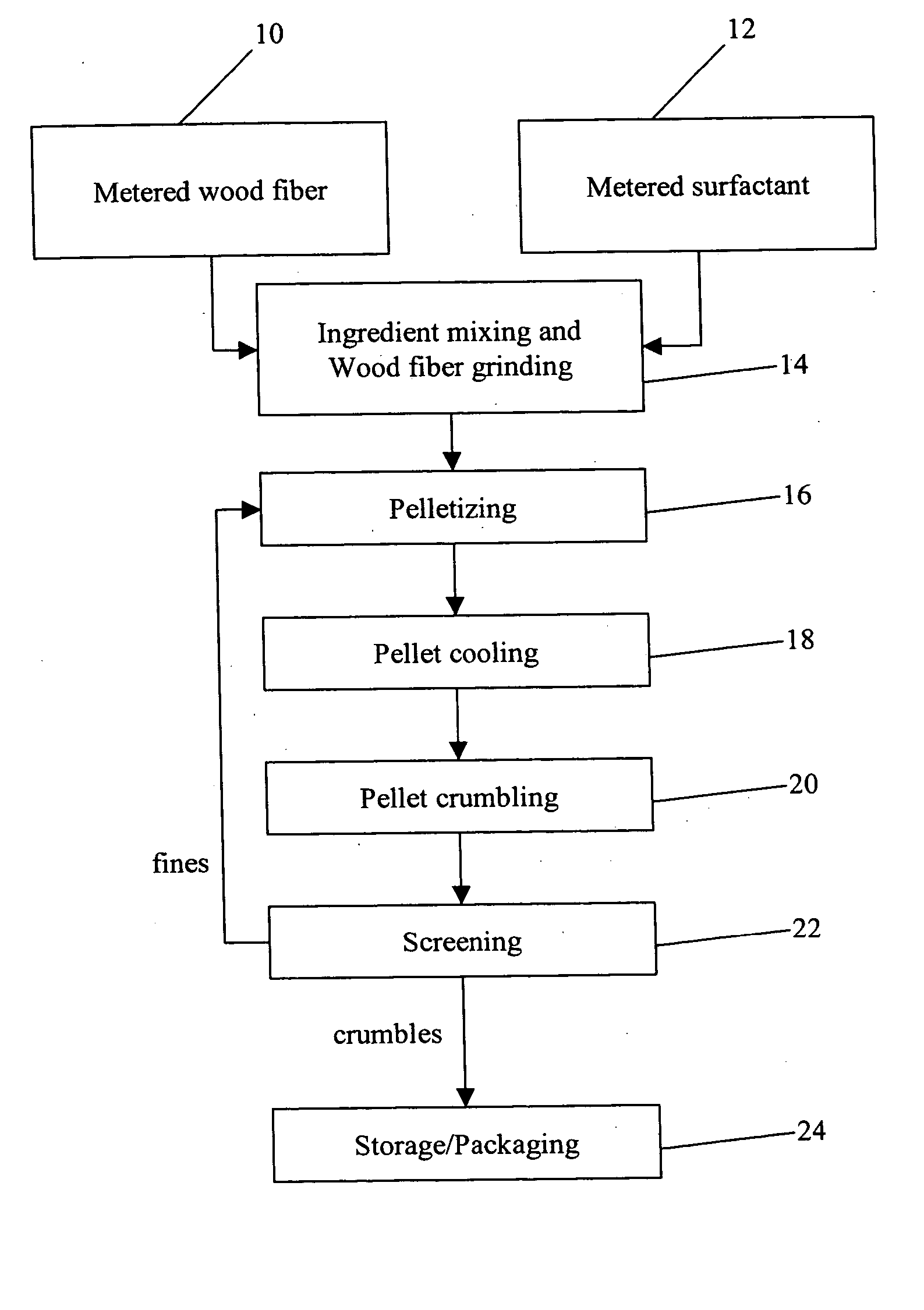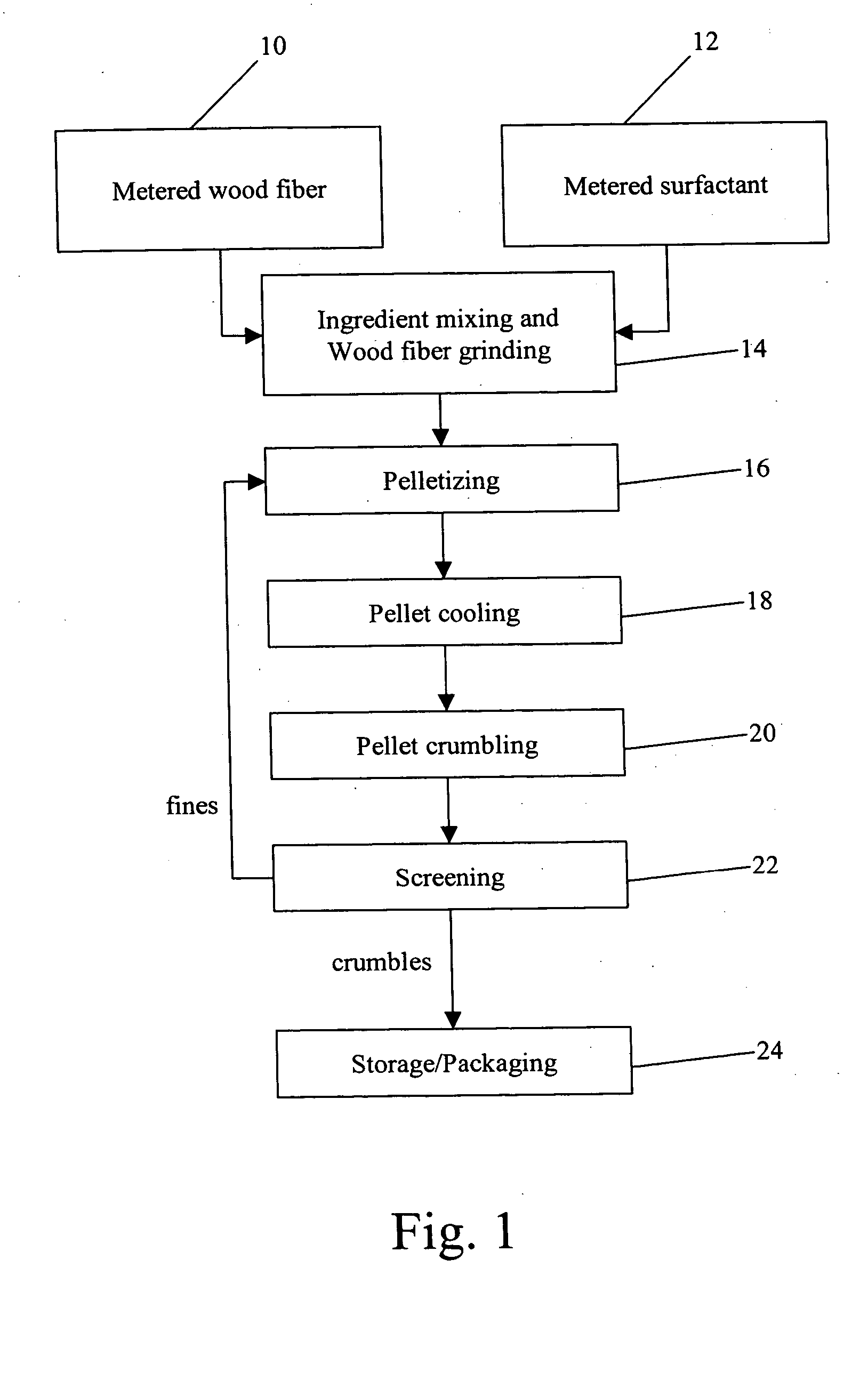Fast absorption animal litter and method for making same
a technology for animal litter and absorption, which is applied in the field of fast absorption of animal litter, can solve the problems of increasing the growth of bacteria, the time required for liquid absorption of litter, so as to reduce the potential for odor, improve the liquid and improve the effect of the absorption rate of litter
- Summary
- Abstract
- Description
- Claims
- Application Information
AI Technical Summary
Benefits of technology
Problems solved by technology
Method used
Image
Examples
Embodiment Construction
[0020] A preferred embodiment of the present invention may now be described. The preferred embodiment is formed of two constituent components: yellow pine wood fiber and a nonionic surfactant. Yellow pine is a commonly used lumber and pulpwood material, and lumber mill scraps are available for use in the production of litter at low cost. The yellow pine is preferably purchased as a kiln dried material, but will be in various sizes including sawdust, shavings, or a mix of these two.
[0021] The purpose of the non-ionic surfactant is to increase the rate of moisture absorption. This trait also improves the odor control exhibited by the product, since urine is quickly absorbed into the litter and odor is trapped within. Several surfactants may be used in alternative embodiments of the invention. These surfactants include T-Det N9 or T-Det NP9 from Harcros Chemicals; Standapol WAQ-LC from the Cognis Corporation; and Wickit 1362 by Hercules Corporation. The absorption rates of each of the...
PUM
 Login to View More
Login to View More Abstract
Description
Claims
Application Information
 Login to View More
Login to View More - R&D
- Intellectual Property
- Life Sciences
- Materials
- Tech Scout
- Unparalleled Data Quality
- Higher Quality Content
- 60% Fewer Hallucinations
Browse by: Latest US Patents, China's latest patents, Technical Efficacy Thesaurus, Application Domain, Technology Topic, Popular Technical Reports.
© 2025 PatSnap. All rights reserved.Legal|Privacy policy|Modern Slavery Act Transparency Statement|Sitemap|About US| Contact US: help@patsnap.com


